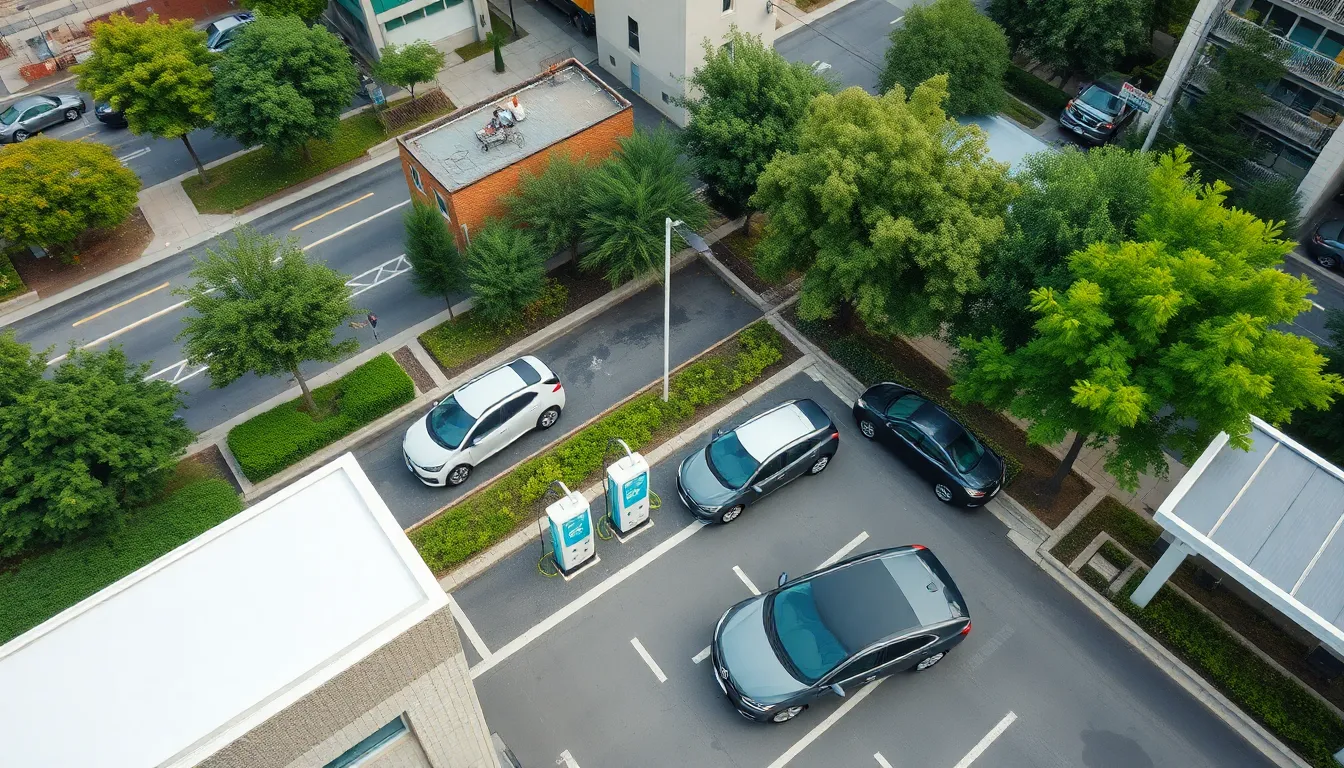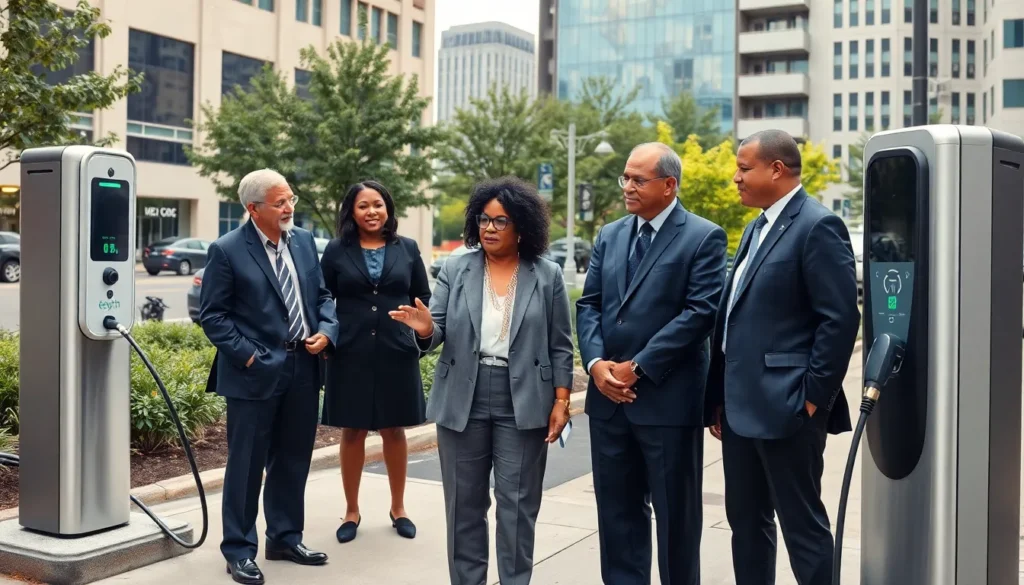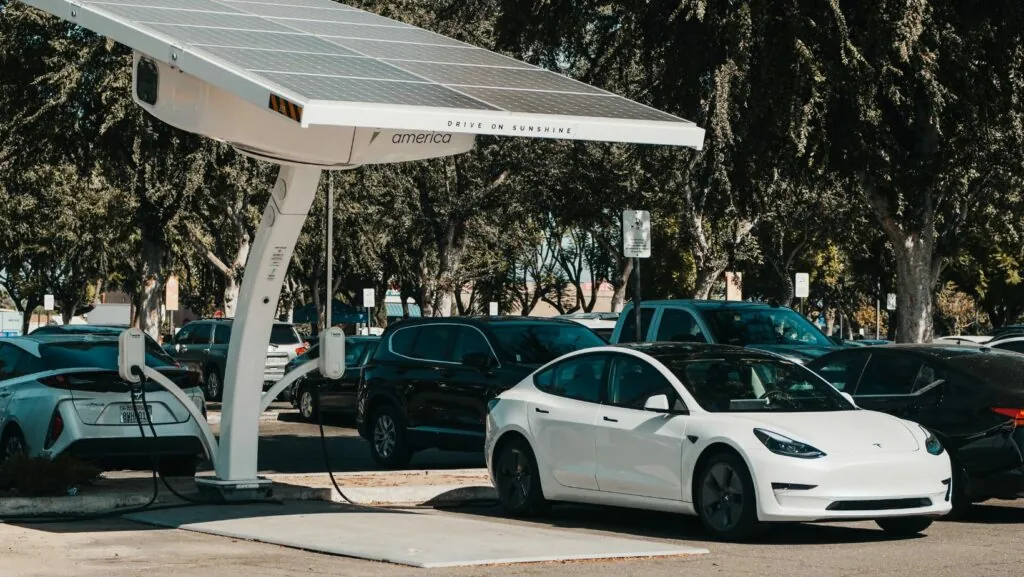As the world races toward a greener future, electric vehicles (EVs) are zooming into the spotlight. But behind the sleek designs and whisper-quiet engines lies a maze of policies that can make or break the EV revolution. It’s not just about charging stations and battery life; it’s about crafting smart policies that drive innovation and adoption.
Table of Contents
ToggleOverview of EV Policy Development
Effective EV policy development revolves around several key components. Governments play a crucial role in setting clear regulatory frameworks, determining standards for vehicle emissions, safety protocols, and charging infrastructure. Legislative bodies often enact incentives, like tax credits and rebates, which can stimulate consumer interest and investment in electric vehicles.
Addressing infrastructure needs remains a priority in the policy conversation. Charging station networks must expand to accommodate increasing EV use, supporting urban and rural areas alike. Policies that incentivize private sector investment can accelerate the deployment of charging facilities, creating accessible solutions for all users.
Collaboration between public and private sectors fosters innovation. Partnerships can enhance research and development efforts, paving the way for new technologies and practices. Engaging local communities in planning processes ensures that strategies align with residents’ needs and preferences.
Data collection and analysis form the backbone of effective EV policies. Gathering information on vehicle performance, energy use, and consumer behaviors helps refine existing policies and develop new initiatives. Continuous monitoring provides policymakers with the insight needed to adapt and improve strategies.
International cooperation enhances the effectiveness of EV policies. Sharing best practices among nations can lead to improved standards and technologies, accelerating the transition to electric mobility globally. Aligning regulations can also facilitate cross-border trade of EVs and related technologies.
Tracking the progress of EV policy implementation remains essential. Evaluating the outcomes of existing measures allows for adjustments and informed decision-making. Regular review processes support continuous improvement and foster sustainable growth in the electric vehicle sector.
Key Drivers of EV Policy

Effective electric vehicle (EV) policy development hinges on several key drivers. Decision-makers prioritize environmental concerns and economic factors to create a sustainable future.
Environmental Concerns
Environmental protection drives the push for EV adoption. Reducing greenhouse gas emissions aligns with global climate goals. Air quality improvement also influences policy decisions, focusing on urban health issues. Policymakers recognize the need for cleaner alternatives to traditional fuel sources. Incentives for EV use can mitigate pollution, fostering a cleaner environment. Furthermore, addressing battery recycling and material sourcing supports sustainability goals. Lasting impact emerges when policies direct resources toward renewable energy integration for charging infrastructure.
Economic Factors
Economic growth and job creation motivate the development of EV policies. Transitioning to electric vehicles can reduce dependence on imported fossil fuels, improving energy security. Policymakers anticipate job opportunities within manufacturing, technology, and infrastructure sectors. Investment in EVs stimulates innovation, while incentives drive consumer adoption and stimulate the market. Studies indicate that every 1,000 EVs sold can create approximately 15 new jobs in related fields. Tax benefits also significantly influence consumer purchasing decisions. Thus, economic incentives remain essential for attracting investment in clean transportation.
Comparison of Global EV Policies
Various countries have enacted policies to accelerate electric vehicle adoption, showcasing diverse strategies and effectiveness.
Leading Countries in EV Adoption
Norway leads in EV adoption, with over 54% of new car sales being electric vehicles in 2022. The country provides incentives such as exemptions from tolls and parking fees to promote EV use. China follows closely, with its government investing significantly in battery technology and EV infrastructure. More than 30% of global EV sales originated from China in 2022. Germany and the United States rank as major players, with each country devising unique incentives and regulations to increase EV market share, aiming for ambitious goals of carbon neutrality by 2050.
Policy Frameworks in Different Regions
Regional policy frameworks vary significantly, influencing EV adoption rates. In Europe, stringent emissions regulations drive manufacturers toward producing electric vehicles, fostering a competitive market. Several countries offer financial incentives for consumers, promoting sustainable transportation options. The United States employs a mix of federal and state tax credits, enhancing affordability and appeal. Asia, particularly Japan and South Korea, benefits from government subsidies aimed at stimulating homegrown EV manufacturers. Each region tailors its policies to local economic contexts, environmental goals, and consumer behavior, resulting in varied adoption rates worldwide.
Challenges in EV Policy Implementation
Challenges persist in the implementation of effective EV policies. Alongside technological advancements, several structural issues require immediate attention.
Infrastructure Limitations
Infrastructure limitations hinder EV adoption. Insufficient charging stations across urban and rural areas creates anxiety among potential users about vehicle range. In 2022, only 10% of expected charging stations were operational within targeted regions. That’s a significant gap for drivers considering the shift to electric vehicles. Local governments often face budget constraints, which delay the development of necessary infrastructure. Collaboration between public and private sectors can facilitate investment in charging networks, alleviating these concerns. Without immediate action, infrastructure shortages will continue to impede growth in EV adoption.
Public Acceptance and Awareness
Public acceptance and awareness present crucial challenges. Many consumers lack information about EV benefits, including long-term cost savings and environmental impacts. Surveys indicate that 70% of potential buyers express concerns about operational costs and vehicle performance. Misconceptions about battery life and charging times further hinder interest in electric vehicles. Educational campaigns can play a vital role in addressing these concerns while promoting the advantages of adopting EVs. Engaging local communities through events and demonstrations can enhance understanding and acceptance. Without these efforts, potential buyers may remain hesitant, limiting the effectiveness of EV policies.
Future Trends in EV Policy Development
The landscape of electric vehicle (EV) policy development continues to evolve with emerging trends. Policymakers focus on innovative strategies to enhance adoption and improve infrastructure.
Innovations in Policy Approaches
Innovative approaches emphasize flexibility in regulatory frameworks. Strategies like tiered incentives encourage adoption based on income levels. Policymakers explore pilot programs in which cities test new systems fostering public engagement. Local partnerships create community-focused solutions that address specific needs. New legislation aims for a comprehensive approach, integrating environmental, economic, and social considerations. Countries increasingly collaborate to learn from each other, sharing best practices to refine their roadmaps.
Role of Technology in Shaping Policy
Technology plays a significant role in developing effective EV policies. Data-driven insights guide policymakers in refining regulations based on consumer behavior and vehicle performance. Smart charging solutions and integration with renewable energy sources enhance reliability and efficiency. Advanced analytics provide tools for tracking the environmental impact and economic benefits of EV adoption. Integration of vehicle-to-grid technologies fosters a more sustainable energy ecosystem. Continuous advancements in battery tech and charging infrastructure evolve alongside policy frameworks, ensuring they remain relevant and effective.
The future of electric vehicles hinges on well-crafted policies that address both technological and infrastructural challenges. By fostering collaboration between governments and private sectors, stakeholders can create a supportive environment for innovation and adoption.
Engaging local communities and leveraging data-driven insights will ensure policies are aligned with consumer needs and behaviors. As countries around the world navigate their unique paths toward EV integration, the emphasis on flexibility and adaptability in policy frameworks will be crucial for sustained growth.
Ultimately, the commitment to cleaner transportation not only aids environmental goals but also drives economic opportunities, making the transition to electric vehicles a pivotal element of a sustainable future.




